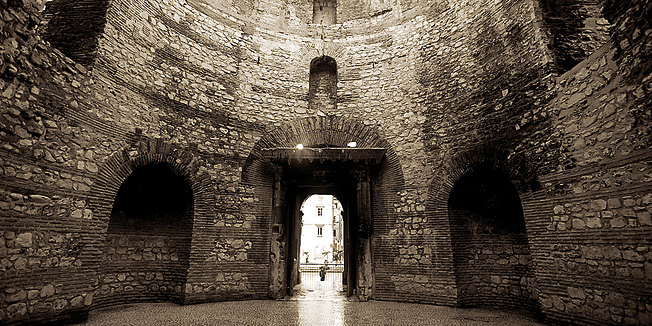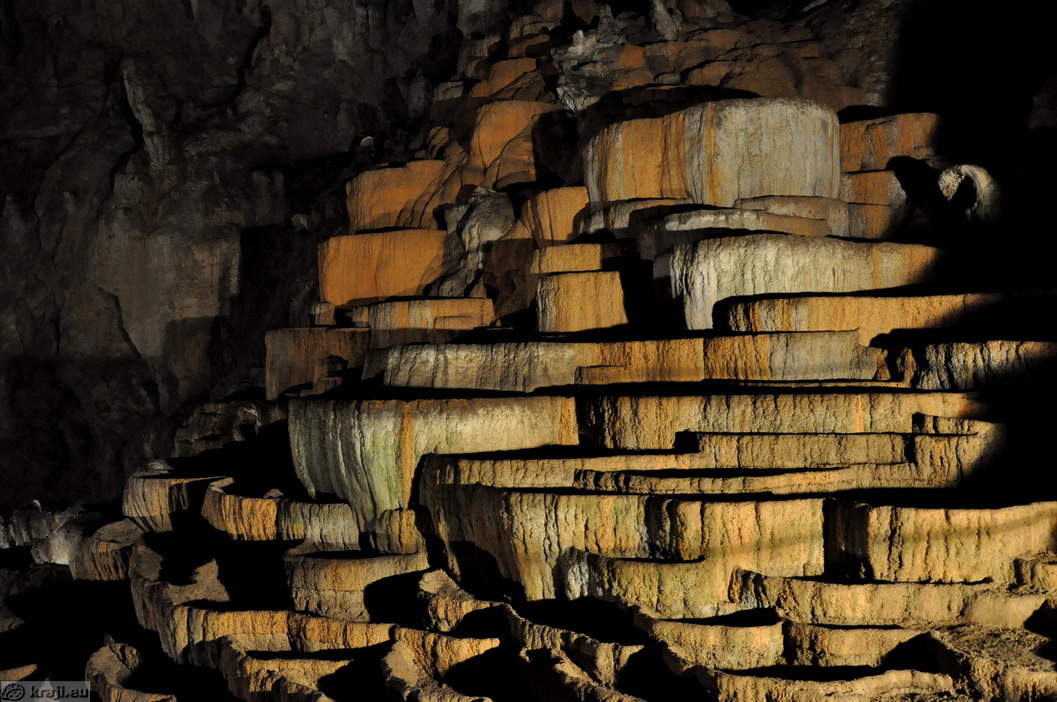UNESCO Regional tour

Zagreb - Zagreb, 13 days & 12 nights
Day 01 ZAGREB arrival
Meet and greet at Zagreb airport followed by a private transfer to the hotel. Afternoon walking tour of Zagreb and welcome dinner at the restaurant. Overnight.

Day 02 ZAGREB – SARAJEVO
Breakfast buffet at the hotel and check out. Departure to Sarajevo, the capital city of Bosnia and Herzegovina. Arrival at the hotel in late afternoon. Dinner and overnight at the hotel.

Day 03 SARAJEVO – VISEGRAD – SARAJEVO
Morning departure in the east part of Bosnia and Herzegovina to the town of Visegrad. The Mehmed Pasa Sokolovic Bridge across the Drina River (UNESCO World Heritage List since 2007) was built at the end of the 16th century by the court architect Mimar Koca Sinan by the orders of Grand Vizier Mehmed Pasa Sokolovic. The bridge is a representative masterpiece of Sinan, one of the greatest architects and engineers of the classical Ottoman period and a contemporary of the Italian Renaissance, with what his work may be compared. The unique elegance of proportion and monumental nobility of the whole site bear witness to the greatness of this style of architecture. Return to Sarajevo for walking city tour. Dinner and overnight at the hotel.

Day 04 SARAJEVO – MOSTAR – DUBROVNIK
Breakfast buffet at the hotel followed by departure to the town of Mostar in the western part of Bosnia and Herzegovina. The historic town of Mostar, developed in the 15th and 16th centuries as an Ottoman frontier town and during the Austro-Hungarian period in the 19th and 20th centuries. Mostar has long been known for its old Turkish houses and Old Bridge – Stari Most (UNESCO World Heritage List since 2005). The Old Bridge area, with its pre-Ottoman, eastern Ottoman, Mediterranean and western European architectural features, is an outstanding example of a multicultural urban settlement. The reconstructed Old Bridge and the Old City of Mostar is a symbol of reconciliation, international co-operation and of coexistence of diverse cultural, ethnic and religious communities. Continue to Dubrovnik for overnight.

Day 05 DUBROVNIK
A half-day tour of the Old City included in UNESCO World Heritage Site list (since 1979). This ancient city surrounded by ramparts and fortresses abounds in architectural and cultural masterpieces carefully preserved for centuries. A pleasant walk will take you to the Rector’s Palace, the Dominican Monastery housing a rich collection of medieval paintings, the Franciscan Monastery, and many other intriguing sites. After the city tour, the guests are free to continue exploring the Old City and its Walls on their own. Overnight in Dubrovnik.

Day 06 DUBROVNIK – STON – SPLIT
Breakfast at hotel followed by departure to Split with en route stop in Ston for walking tour. The Dubrovnik Republic built the town of Ston in the 14th century in the form of a two-fold fortification system (Large and Small Ston), aiming to protect the salt plants, one of its major economic resources. A 12 - kilometer long wall (the world’s second longest wall after the Wall of China) connects two fortified cities: the first was built in order to protect the salt plants and the second as the salt export harbor. The oldest in Europe, the Ston salt plants are still in use, and the salt producing technology has not changed for centuries. Overnight in Split.

Day 07 SPLIT – TROGIR – SPLIT
The day will begin with the walking tour of Trogir – the town museum (UNESCO World Heritage List since 1997). Trogir is a remarkable example of urban continuity. The orthogonal street plan of this island settlement dates back to the Hellenistic period and it was embellished by successive rulers with many fine public and domestic buildings and fortifications. Its beautiful Romanesque churches are complemented by the outstanding Renaissance and Baroque buildings from the Venetian period.

Departure to Split for a walking tour through the historical center and the well preserved remains of Diocletian's Palace (UNESCO World Heritage List since 1979), built between the late 3rd and early 4th centuries A.D. The cathedral was built in the Middle Ages, reusing materials from the ancient mausoleum. 12th and 13th century Romanesque churches, medieval fortifications, 15th -century Gothic palaces and other palaces in Renaissance and Baroque style make up the rest of the protected area. Overnight in Split.

Day 08 SPLIT – ISLAND OF HVAR – SPLIT
Departure from Split port for a ferry boat transfer to the Island of Hvar. A visit to Stari Grad Plain (UNESCO World Heritage List since 2009), a cultural landscape that has remained practically intact since it was first colonized by Ionian Greeks from Pharos in the 4th century BC. The original agricultural activity of this fertile plain, mainly focused on grapes and olives, has been maintained since Greek times to the present days. The landscape features ancient stone walls and trims, small stone shelters, and bears testimony to the ancient geometrical system of land division used by the ancient Greeks. Transfer to the town Hvar for a guided visit before returning to Split for overnight.

Day 09 SPLIT – SIBENIK – ZADAR
Morning departure to Zadar with en route stop in the city of Sibenik for a visit of the cathedral of St James (UNESCO World Heritage List since 2000). The Cathedral bears witness to the considerable exchanges in the field of monumental arts between Northern Italy, Dalmatia and Tuscany in the 15th and 16th centuries. The three architects who succeeded one another in the construction of the Cathedral - Francesco di Giacomo, Georgius Mathei Dalmaticus and Niccolò di Giovanni Fiorentino - developed a structure built entirely from stone and using unique construction techniques for the vaulting and the dome of the Cathedral. The form and the decorative elements of the Cathedral, such as the remarkable frieze decorated with 71 sculptured faces of men, women, and children, also illustrate the successful fusion of Gothic and Renaissance art.

Arrival to Zadar followed by a walking tour of this ancient Croatian city which inherited diverse architectural sights from its turbulent history, such as the church of St Donat, originally built in the 9th century, today represents one of the largest examples of Byzantine architecture. Another landmark is the cathedral of St Anastasia whose building was constructed in the 12th and 13th centuries in Romanesque style. Overnight.

Day 10 ZADAR – PLITVICE LAKES NATIONAL PARK – OPATIJA
Breakfast and departure towards Opatija with en-route stop for visiting Plitvice Lakes National Park. Situated in a thick forest, Plitvice Lakes is considered to be one of the most beautiful natural phenomena in the world. The park harbors a grand collection of waterfalls; gallery of lakes, forest and diversity of animal life and the lakes are renowned for their distinctive colors, ranging from azure to green and blue. The sixteen lakes which are formed by natural dams of travertine are separated into upper and lower lakes. About eight km of pathways and wooden walking trails around the lakes are accessible to visitors. Plitvice Lakes were declared a National Park in 1949, and since 1979 they have been on UNESCO’s list of World Natural Heritage. Continue to Opatija for overnight.
Day 11 OPATIJA – ISTRIA TOUR – POREC – OPATIJA
Breakfast at hotel followed by a full day excursion to Istrian Peninsula. As soon as we exit the tunnel through Ucka Mountain, one will recognize why Istrian Peninsula is usually called The Small Tuscany. Numerous hills covered with vineyards and olive trees, topped with picturesque small towns dominate the entire panorama. The first stop will be done in medieval hilltop town of Motovun rising over the Mirna River valley. Following the scenic route further to the seaside, we will pass below Groznjan towards the town of Porec where we will visit the group of religious monuments. The Euphrasian Basilica (UNESCO World Heritage List since 1997), atrium, baptistery and episcopal palace are outstanding examples of the region's religious architecture, while the basilica itself combines classical and Byzantine elements in an exceptional manner. The final stop before return to Opatija will be a walking tour of Rovinj.

Day 12 OPATIJA – SKOCJANSKE CAVES – ZAGREB
Morning departure to the Skocjan Caves in Slovenia, the only monument included on UNESCO’s list of natural and cultural world heritage sites (since 1986). The caves hold a significant position among the world’s natural monuments. This exceptional system of limestone caves comprises collapsed dolines, some 6 km of underground passages with a total depth of more than 200 m, many waterfalls and one of the largest known underground chambers. Return to Zagreb. Farewell diner at local restaurant and overnight.

Day 13 ZAGREB departure
Breakfast at hotel and departure transfer to the airport for outbound flight.
For rates & quotations please send an enquiry!